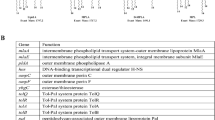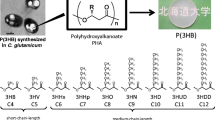Abstract
Lipid A is the lipophilic region of lipopolysaccharides and lipooligosaccharides, the major components of the outer leaflet of most part of Gram-negative bacteria. Some lipid As are very promising immunoadjuvants. They are obtained by extraction from bacterial cells or through total chemical synthesis. A novel, semisynthetic approach to lipid As is ongoing in our laboratories, relying upon the chemical modification of a natural lipid A scaffold for the fast obtainment of several other lipid As and derivatives thereof. The first requisite for this strategy is to have this scaffold available in large quantities through a scalable process. Here, we present an optimized fed-batch fermentation procedure for the gram-scale production of lipid A from Escherichia coli K4 and a suitable phenol-free protocol for its purification. A study for regioselective de-O-phosphorylation reaction was then performed to afford pure monophosphoryl lipid A with an attenuated endotoxic activity, as evaluated by cytokine production in human monocytic cell line THP-1 in vitro. The reported method for the large-scale obtainment of monophoshoryl lipid A from the fed-batch fermentation broth of a recombinant strain of E. coli may permit the access to novel semisynthetic lipid A immunoadjuvant candidates.









Similar content being viewed by others
References
Bedini E, De Castro C, De Rosa M, Di Nola A, Iadonisi A, Restaino OF, Schiraldi C, Parrilli M (2011) A microbiological-chemical strategy to produce chondroitin sulfate A, C. Angew Chem Int Ed 50:6160–6163. doi:10.1002/anie.201101142
Carillo S, Pieretti G, Parrilli E, Tutino ML, Gemma S, Molteni M, Lanzetta R, Parrilli M, Corsaro MM (2011) Structural investigation and biological activity of the lipooligosaccharide from the psychrophilic bacterium Pseudoalteromonas haloplanktis TAB 23. Chem Eur J 17:7053–7060. doi:10.1002/chem.201100579
Caroff M, Tacken A, Szabo L (1988) Detergent-accelerated hydrolysis of bacterial endotoxins and determination of the anomeric configuration of the glycosyl phosphate present in the “Isolated lipid A” fragment of the Bordetella pertussis endotoxin. Carbohydr Res 175:273–282. doi:10.1016/0008-6215(88)84149-1
Cimini D, De Rosa M, Carlino E, Ruggiero A, Schiraldi C (2013) Homologous overexpression of rfaH in E. coli K4 improves the production of chondroitin like capsular polysaccharide. Microb Cell Factories 12:46
El Hamidi A, Tirsoaga A, Novikov A, Hussein A, Caroff M (2005) Micro-extraction of bacterial lipid A: easy and rapid method for mass spectrometric characterization. J Lipid Res 46:1773–1778. doi:10.1194/jlr.D500014-JLR200
Fujimoto Y, Kimura E, Murata S, Kusumoto S, Fukase K (2006) Synthesis and bioactivity of fluorescence- and biotin-labeled lipid A analogues for investigation of recognition mechanism in innate immunity. Tetrahedron Lett 47:539–543. doi:10.1016/j.tetlet.2005.11.041
Fujimoto Y, Iwata M, Imakita N, Shimoyama A, Suda Y, Kusumoto S, Fukase K (2007) Synthesis of immunoregulatory Helicobacter pylori lipopolysaccharides partial structures. Tetrahedron Lett 48:6577–6581. doi:10.1016/j.tetlet.2007.07.036
Galanos C, Luderitz O, Westphal O (1968) A new method for the extraction of R lipopolysaccharides. Eur J Biochem 9:245–249. doi:10.1111/j.1432-1033.1969.tb00601.x
Garçon N, Chomez P, Van Mechelen M (2007) GlaxoSmithKline adjuvant systems in vaccines: concepts, achievements and perspectives. Expert Rev Vaccines 6:723–739. doi:10.1586/14760584.6.5.723
Holst O, Müller-Loennies S, Lindner B, Brade H (1993) Chemical structure of the lipid A of Escherichia coli J-5. Eur J Biochem 214:695–701. doi:10.1111/j.1432-1033.1993.tb17970.x
Jansson PE (1999) The chemistry of O-polysaccharide chains in bacterial lipopolysaccharides. In: Opal SM, Vogel SN, Morrison DC (eds) Endotoxin in health and disease. M. Dekker Inc., New York, pp 155–178
Jiang ZH, Budzynski WA, Qiu D, Yalamati D, Koganty RR (2007) Monophosphoryl lipid A analogues with varying 3-O-substitution: synthesis and potent adjuvant activity. Carbohydr Res 342:784–796. doi:10.1016/j.carres.2007.01.012
Johnson KG, Perry MB (1976) Improved techniques for the preparation of bacterial lipopolysaccharides. Can J Microbiol 22:29–34
Johnson DA, Keegan DS, Sowell CG, Livesay MT, Johnson CL, Taubner LM, Harris A, Myers KR, Thompson JD, Gustafson GL, Rhodes MJ, Ulrich JT, Ward JR, Yorgensen YM, Cantrell JL, Brookshire VG (1999) 3-O-Desacyl monophosphoryl lipid A derivatives: synthesis and immunostimulant activities. J Med Chem 42:4640–4649. doi:10.1021/jm990222b
Kwissa M, Kasturi SP, Pulendran B (2007) The science of adjuvants. Expert Rev Vaccines 6:673–684. doi:10.1586/14760584.6.5.673
Li J, Thibault P, Martin A, Richards JC, Wakarchuk WW, Van der Vlip W (1998) Development of an on-line preconcentration method for the analysis of pathogenic lipopolysaccharides using capillary electrophoresis-electrospray mass spectrometry. Application to small colony isolates. J Chromatogr A 817:325–336
Li Y, Wang Z, Chen J, Ernst RK, Wang X (2013) Influence of lipid A acylation pattern on membrane permeability and innate immune stimulation. Mar Drugs 11:3197–3208. doi:10.3390/md11093197
MacLean LM, Perry MB (1997) Structural characterization of the serotype O:5 O-polysaccharide antigen of the lipopolysaccharide of Escherichia coli O:5. Biochem Cell Biol 75:199–205. doi:10.1139/o97-039
Maiti KK, De Castro M, Abdel-Aal El-Sayed ABM, Foote MI, Wolfert MA, Boons GJ (2010) Chemical synthesis and proinflammatory responses of monophosphoryl lipid A adjuvant candidates. Eur J Org Chem 80–91. doi:10.1002/ejoc.200900973
Manzo E, Molinaro A, Bedini E, De Castro C, Parrilli M (2001) A very efficient method to cleave lipid A and saccharide components in bacterial lipopolysaccharides. Carbohydr Res 333:339–342. doi:10.1016/S0008-6215(01)00157-4
Marciani DJ (2003) Vaccine adjuvants: role and mechanisms of action in vaccine immunogenicity. Drug Discov Today 8:934–943. doi:10.1016/S1359-6446(03)02864-2
Mata-Haro V, Cekic C, Martin M, Chilton PM, Casella CR, Mitchell TC (2007) The vaccine adjuvant monophosphoryl lipid A as a TRIF-biased agonist of TLR4. Science 316:1628–1632. doi:10.1126/science.1138963
Medzithov R (2008) Origin and physiological roles of inflammation. Nature 454:428–435. doi:10.1038/nature07201
Moussaoui IC, Novikov A, Bhrada F, Perry MB, Maltouf AF, Caroff M (2011) A new rapid and micro-scale hydrolysis, using triethylamine citrate, for lipopolysaccharide characterization by mass spectrometry. Rapid Commun Mass Spectrom 25:2043–2048. doi:10.1002/rcm.5084
Nurminen M, Vaara M (1996) Methanol extracts LPS from deep rough bacteria. Biochem Biophys Res Commun 219:441–444. doi:10.1006/bbrc.1996.0252
Oursel D, Loutelier-Bourhis C, Orange N, Chevalier S, Norris V, Lange CM (2007) Lipid composition of membranes of Escherichia coli by liquid chromatography/tandem mass spectrometry using negative electrospray ionization. Rapid Commun Mass Spectrom 21:1721–1728. doi:10.1002/rcm.3013
Park BS, Song DH, Kim HM, Choi BS, Lee H, Lee JO (2009) The structural basis of lipopolysaccharide recognition by the TLR4–MD-2 complex. Nature 458:1191–1196. doi:10.1038/nature07830
Peri F, Calabrese V (2014) Toll-like receptor 4 (TLR4) modulation by synthetic and natural compounds: an update. J Med Chem 57:3612–3622. doi:10.1021/jm401006s
Qureshi N, Takayama K, Ribi E (1982) Purification and structural determination of nontoxic lipid A obtained from the lipopolysaccharide of Salmonella typhimurium. J Biol Chem 257:11808–11815
Restaino OF, Cimini D, De Rosa M, De Castro C, Parrilli M, Schiraldi C (2009) High-performance CE of Escherichia coli K4 cell surface polysaccharides. Electrophoresis 30:3877–3883. doi:10.1002/elps.200900279
Ribeiro AA, Zhou Z, Raetz CRH (1999) Multi-dimensional NMR structural analyses of purified lipid X and lipid A (endotoxin). Magn Reson Chem 37:620–630. doi:10.1002/(SICI)1097-458X(199909)37:9<620::AID-MRC517>3.0.CO;2-Q
Rietschel ET, Kirikae T, Schade FU, Mamat U, Schmidt G, Loppnow H, Ulmer AJ, Zähringer U, Seydel U, Di Padova F, Schreier M, Brade H (1994) Bacterial endotoxin: molecular relationships of structure to activity and function. FASEB J 8:217–225
Rodriguez ML, Jann B, Jann K (1988) Structure and serological characteristics of the capsular K4 antigen of Escherichia coli O5:K4:H4, a fructose-containing polysaccharide with a chondroitin backbone. Eur J Biochem 177:117–124. doi:10.1111/j.1432-1033.1988.tb14351.x-i2
Shay LK, Hunt HR, Wegner GH (1987) High-productivity fermentation process for cultivating industrial microorganisms. J Ind Microbiol 2:79–85
Shimoyama A, Saeki A, Tanimura N, Tsutsui H, Miyake K, Suda Y, Fujimoto Y, Fukase K (2011) Chemical synthesis of Helicobacter pylori lipopolysaccharides partial structures and their selective proinflammatory responses. Chem Eur J 17:14464–14474. doi:10.1002/chem.201003581
Silipo A, Lanzetta R, Amoresano A, Parrilli M, Molinaro A (2002) Ammonium hydroxide hydrolysis: a valuable support in the MALDI-TOF mass spectrometry analysis of lipid A fatty acid distribution. J Lipid Res 43:2188–2195. doi:10.1194/jlr.D200021-JLR200
Tirsoaga A, El Hamidi A, Perry MB, Caroff M, Novikov A (2007) A rapid, small-scale procedure for the structural characterization of lipid A applied to Citrobacter and Bordetella strains: discovery of a new structural element. J Lipid Res 48:2419–2427. doi:10.1194/jlr.M700193-JLR200
Vinogradov EV, Bock K, Petersen BO, Holst O (1997) The structure of the carbohydrate backbone of the lipopolysaccharide from Acinetobacter strain ATCC 17905. Eur J Biochem 243:122–127. doi:10.1111/j.1432-1033.1997.0122a.x
Wang X, Ribeiro AA, Guan Z, McGrath SC, Cotter RJ, Raetz CRH (2006) Structure and biosynthesis of free lipid A molecules that replace lipopolysaccharide in Francisella tularensis subsp. novicida. Biochemistry 45:14427–14440. doi:10.1021/bi061767s
Westphal O, Jann K (1965) Bacterial lipopolysaccharides. Extraction with phenol-water and further application of the procedure. Methods Carbohydr Chem 5:83–91
Yi EC, Hackett M (2000) Rapid isolation method for lipopolysaccharides and lipid A from Gram negative bacteria. Analyst 125:651–656. doi:10.1039/B000368I
Zähringer U, Lindner B, Rietschel ET (1999) Chemical structure of lipid A: recent advances in structural analysis of biologically active molecules. In: Opal SM, Vogel SN, Morrison DC (eds) Endotoxin in health and disease. M. Dekker Inc., New York, pp 93–114
Zhang Y, Gaekwad J, Wolfert MA, Boons GJ (2007) Modulation of innate immune responses with synthetic lipid A derivatives. J Am Chem Soc 129:5200–5216. doi:10.1021/ja068922a
Zhang Y, Gaekwad J, Wolfert MA, Boons GJ (2008) Innate immune responses of synthetic lipid A derivatives of Neisseria meningitidis. Chem Eur J 14:558–569. doi:10.1002/chem.200701165
Acknowledgments
This research was supported by the Ministero dell’Istruzione dell’Università e della Ricerca (MIUR), project PON01_00117 “Antigeni e adiuvanti per vaccini e immunoterapia.” The authors gratefully acknowledge Filomena Ferrara for the help provided during product purification.
Author information
Authors and Affiliations
Corresponding authors
Rights and permissions
About this article
Cite this article
Pieretti, G., Cipolletti, M., D’Alonzo, D. et al. A combined fermentative-chemical approach for the scalable production of pure E. coli monophosphoryl lipid A. Appl Microbiol Biotechnol 98, 7781–7791 (2014). https://doi.org/10.1007/s00253-014-5865-6
Received:
Revised:
Accepted:
Published:
Issue Date:
DOI: https://doi.org/10.1007/s00253-014-5865-6




